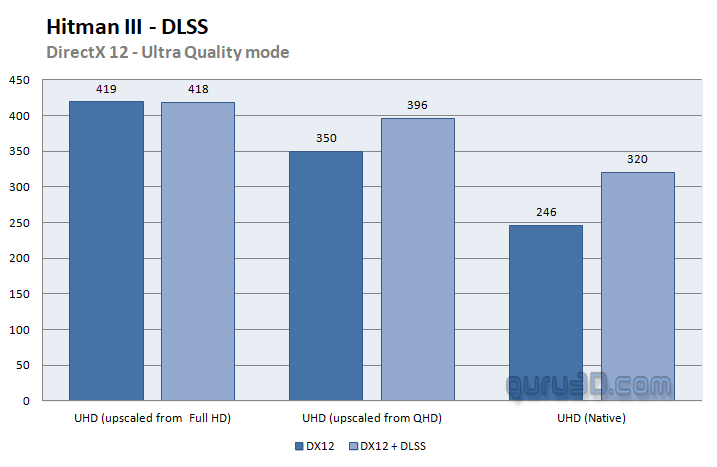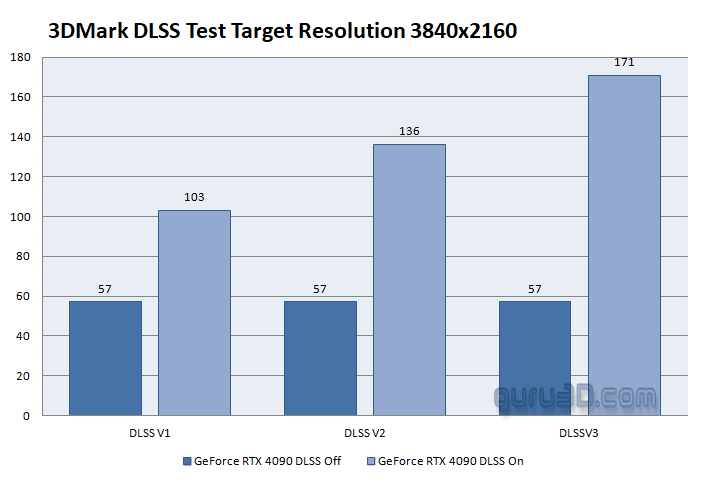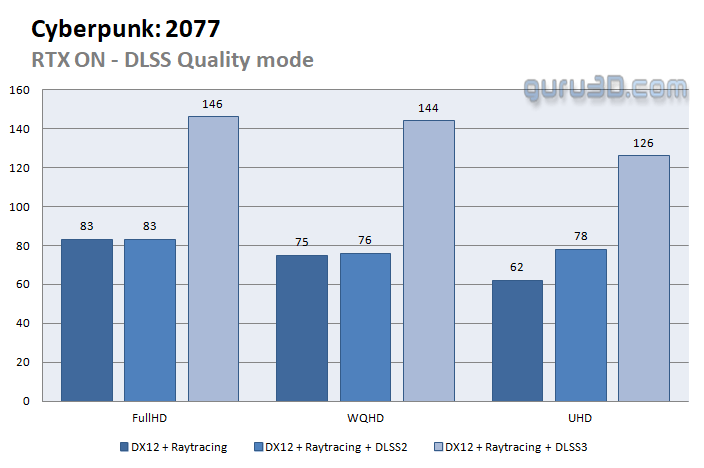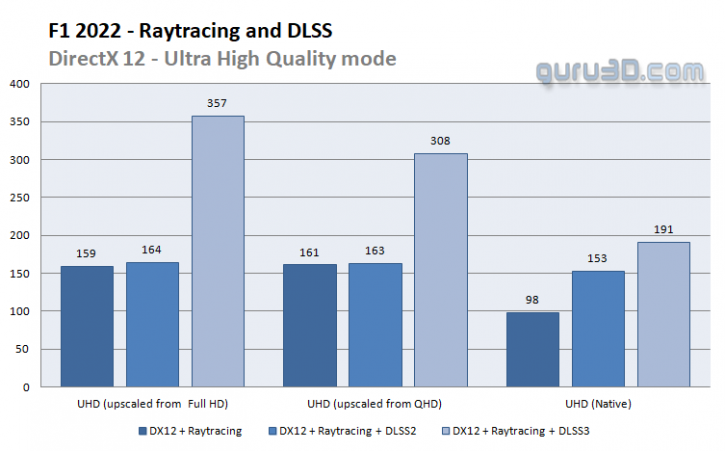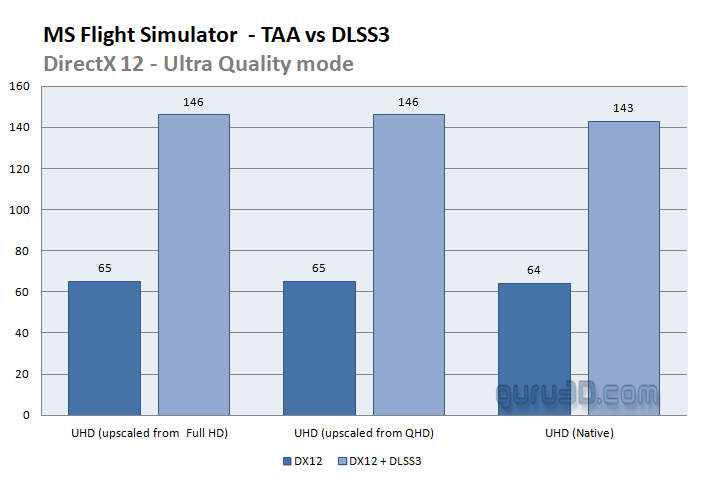DLSS 2/3 / Frame Generation performance
DLSS3
In conditions where you'd like (or need) a bit more FPS you can apply DLSS3 and Frame generation. DLSS, or Deep Learning Super Sampling, is a technology developed by NVIDIA that uses deep learning and artificial intelligence to upscale lower resolution images to higher resolution ones. DLSS 3.0 is the third iteration of this technology, featuring several improvements over its predecessors. DLSS 3.0 improves the image quality, performance, and efficiency of the upscaling process. It uses AI-based neural networks trained on a vast database of high-quality, high-resolution images from various games. The neural networks are then used to generate and predict high-resolution images by intelligently analyzing the lower resolution input.
DLSS Frame Generation
To generate a new frame, DLSS 3 takes the current frame from a game or application, analyzes it to determine the best way to upscale it, and then generates a new, higher resolution version of the frame using the trained AI model. This new frame is then displayed on the screen, resulting in a higher quality, smoother, and more detailed image. One of the advantages of DLSS 3 frame generation is that it can improve the performance of games on lower-end hardware by allowing them to run at lower resolutions while still producing high-quality images. This is because DLSS 3 can upscale the lower resolution image to a higher one that looks almost as good as a native resolution image, while using fewer resources to render the lower-resolution image.
This page is reused from the original reference review.
DLSS 3.0
Believe it or not, DLSS3 is where new and astounding performance will happen. We don't have heaps of results just yet but first, let's take the DLSS test from 3DMark to get a generic idea:
The baseline non-DLSS result set of the test is based on raytracing and ends at 57 FPS on average. As you can see DLSS3 offers an almost 3x performance increase. Our target render resolution for all tests here is 3840x2160 (UHD). So yeah, 3x performance is the potential that DLSS3 offers. But let's move on to a game.
We measure a jump from 62 FPS with a GeForce RTX 4090 towards ~126 FPS; that's incredible. And if you are wondering, this is what Raytracing-enabled Cyberpunk with DLSS3 looks like at Ultra HD, have a peek where we walk around in the Ripperdoc at well over 100 FPS:
Above: Raytracing and DLSS3 enabled
We had some more pre-release builds available; check out F1 2022 will get updated to DLSS3.0; again Raytracing enabled. The magic is happening with the new DLSS Frame generation feature. It seems it can solve the more considerable Software/CPU limitations (bottlenecks) your PC has.
Above: Raytracing and DLSS3 enabled
Microsoft Flight Simulator. The raw shader performance of the GeForce RTX 4090 pushes this to 64 FPS. But then the real magic; below we have also added a video have a peek. The results are outstanding. We're flying around in Ultra HD at 125~150 FPS effortlessly, the scenery is stunning with ultra-quality settings. All resolutions show the same framerates, meaning there's a huge bottleneck somewhere. Still, you cannot complain; that's over 2x performance with the flick of a switch.
Above: Microsoft Flight Simulator and DLSS3 enabled

